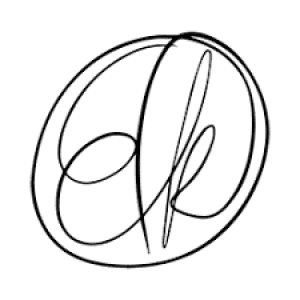
I vividly recall that one of the first things I wanted to be when I grew up was a sneaker and sportswear designer. Seeing the initial design sketches from Nike’s design name immediately brought an immense amount of curiosity.
At the time, it was unfathomable to me that somebody could design and produce something to accentuate human performance and push it to the limits. But alas, I never took biology in high school, nor applied myself at drawing. I had no interest in music and was one of the few people in my group of friends to not play in the school band (in hindsight, this may have been a blessing in disguise). In fact, despite my interest in sneakers through stories and engineering, I never made any inroads directly into that world.
Even the way I stumbled into publishing was hardly out of any deliberate motives. My only so-called “creative skill” growing up was writing. I couldn’t draw or play an instrument. Nothing provided me an outlet for personal expression in a traditional artistic sense. Writing was an act I practiced only out of a need to deliver homework (as do many of did). It was the only way to share what was an otherwise caged and vivid imagination.
I recall writing a story on Elvis’ abduction by aliens — in French nonetheless — and earned high praise from my teacher. Even today, I’d hardly call myself a writer, but rather a communicator. Back in 2007, I purchased a Ricoh GX100: it was a prosumer camera with a good amount of manual functions. One thing led to another and I realized that photography was my only real tool towards “being creative.” Everybody’s definition varies, but as we know it today, somebody creative or “artsy” earns this title through some sort of mass consumable output. It’s a picture, it’s a song, or it’s a design. Fast forward to the present. My days are consumed by calls, Keynote, and PDFs. I’m hardly creating, yet interestingly I’m still satisfied by these otherwise regimented tasks.
I still bring a camera wherever I go, yet it wasn’t enough for me to experience this existential crisis that made me question what I’m doing? Despite the world that MAEKAN/Adam Studios operates in, I hardly have any sort of real interactions with the final product. At its core, creativity is about finding unexpected connections. This is a belief we’ve embraced since MAEKAN’s inception. I questioned myself and whether I was overlooking one of our most important philosophies. We’re often so enamored with the final product. It’s the shoe on the shelf we pick up and examine. It’s not the process of ideating, designing, and testing the shoe. It’s the song is what we bump in the club, not the countless hours in the studio, sitting in silence deliberating, or mixing down the track.
I’ve hardly ever been one to care for the final product. If anything, I find myself infinitely more fascinated with how intangible ideas alongside experiences result in the product. When we focus on one side of the story more than the other, we lose something. An overt focus on the final product prevents us from understanding and analyzing the very outcome we’re trying to achieve — when we major in the minors and not the direction, we can miss the details that create something memorable and meaningful.
On the flipside, as in my case, the lack of interest in sharing the final output, as well as the subsequent support of the final product whether through marketing or PR is also incorrect. Products that have a highly considered process in themselves yield great outcomes. These outcomes also deserve to be shared. They create conversation and discourse because the tangibility of the product means we have a concrete reference to serve as a platform for further exploration. Not everybody possesses the capability to operate through the spectrum of ideation, process, and execution. There is equal value in all of it.
I’ve realized as much as I once loved getting my hands dirty, I’ve seen myself shift and essentially focus all my efforts behind the scenes. There’s something interesting about creating what are essentially intangible things that serve as the foundation and catalyst for further creation. In short, make the act of creativity sustainable for yourself and those around so that they realize that, despite the over-indexed celebration of the final product, there’s just as much importance with the behind-the-scenes. Finding ways to connect big ideas and help them through to a final outcome will never not be needed.
Creativity as the world we know via MAEKAN is primarily through visual and sonical things. But to think that framework and process aren’t inherently creative to the final outcome is to detrimentally misunderstand how great, sustainable creative work is conceived. In the often overused and cliched iceberg analogy, what we see publicly is the tip of the iceberg. Much of the procedures may lie out of sight, though they should never lie out of mind. Signing off for the month,

Eugene Kan
Editor-in-Chief
























